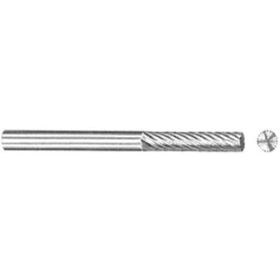Carbide burrs: exactly what are they?
Basically, carbide can be a strong combination comprised of many elements, including carbon. Additionally, high-quality tungsten is commonly used to make carbide burrs once it has been heat-treated. Tungsten is more rigid than steel, therefore carbide burrs can reduce through hard metals more quickly. Tungsten carbide, metallic that is certainly exceptionally strong and may tolerate high temperatures (approximately 3 x stiffer than steel), is the materials to create carbide burs. Carbide burs is able to keep a sharp leading edge and become used repeatedly without losing it due to their toughness. Carbide burs, however, are brittle and have a propensity to shatter under stress. You need to operate them lightly and also at high speeds.

Carbide rotary burrs, also known as rotary files or die grinder bits, can be used for shaping, grinding, and removing burrs, burs, and sharp edges from materials (deburring).
The most frequent uses of carbide burs will be to excavate and make preparations cavities, finish cavity walls, complete restoration surfaces, drill old fillings, finish crown preparations, shape bone, remove impacted teeth, and separate crowns and bridges. Their heads and shanks identify burs created from carbide. The type of shank is necessary is determined by the sort of hand piece being utilized. Whatever cutting design or head shape used depends on the task to be performed.
Reason for Carbide Burr
The five most frequent applications for carbide burrs are the following:
Clipping the impeller runners, such as car engines.
Processing pipes, polishing the counter of inner holes on mechanical components, and routing and groove processing of assorted mechanical parts, as in machine makers and repair shops.
To complete machining the chambers of metal moulds, for example shoe moulds.
For handmade presents, they carve a variety of metals and non-metals.
Cast, forged, and welded components, including those found in machine foundries, shipyards, and car makers, should have their flashes, burrs, and welded seams removed..
Benefits associated with Carbide Burrs
Carbide tools provide a variety of benefits, that are the following:
Carbide burrs are ten times more efficient at machining than the usual manual file and almost significantly better when compared to a tiny grinder wheel using a handle.
Burrs made from carbide cut processing costs overall.
To reduce dust pollution, the burrs make use of a handle to exchange the tiny grinding wheel.
When machining mould cavities with extreme accuracy, carbide burrs help in producing results of the greatest caliber.
Carbide burrs are 200 times are more durable than tiny grinding wheels and 10 times better made than high-speed steel tools.
Utilizing carbide burrs is straightforward, dependable, safe, and straightforward.
Certain, steel, carbon steel, metal, marble, jade, copper, aluminum, and alloy steel all can be given a carbide burr.
To learn more about carbide ball burr take a look at the best resource
